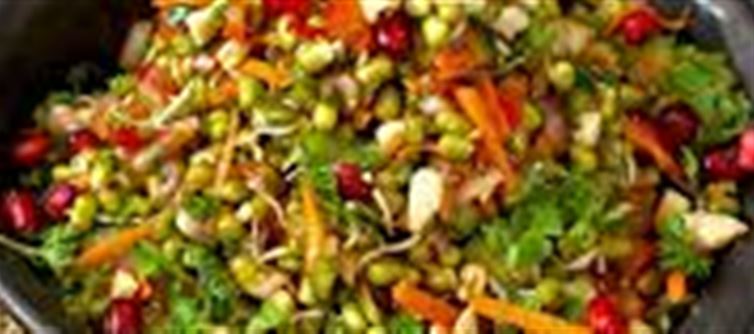
After a good workout, your body needs protein, fiber, and essential nutrients to repair muscles and replenish energy. Sprouts are one of the best post-workout foods because they are rich in protein, vitamins, and minerals, easy to digest, and naturally energizing.
Here are 4 healthy sprouts you can include after exercise:
.jpg)
1. Green Moong Sprouts (Whole Green Gram)
- Protein: ~3 g per ½ cup
- Benefits: Rich in protein, fiber, and vitamin C, green moong sprouts help muscle repair, improve digestion, and boost immunity.
- How to Eat: Toss with chopped tomatoes, cucumber, and lemon juice for a refreshing post-workout salad.
2. Chickpea Sprouts (Chana Sprouts)
- Protein: ~7 g per ½ cup
- Benefits: Packed with protein and complex carbs, chickpea sprouts provide sustained energy and aid in muscle recovery.
- How to Eat: Mix with onions, coriander, and a pinch of chaat masala for a tasty snack.
3. Alfalfa Sprouts
- Protein: ~1.3 g per ½ cup
- Benefits: Low in calories but rich in antioxidants, vitamins A, C, and K, alfalfa sprouts help reduce inflammation and support bone health.
- How to Eat: Add to sandwiches, wraps, or salads for a crunchy, nutritious boost.
4. Lentil Sprouts (Masoor or Moong Dal Sprouts)
- Protein: ~6–7 g per ½ cup
- Benefits: These sprouts are high in essential amino acids, iron, and fiber, supporting muscle repair and overall vitality.
- How to Eat: Lightly steam and season with lemon, salt, and pepper, or add to soups and stews.
🌟 Tips for Consuming Sprouts Post-Workout
- Eat fresh sprouts to retain maximum nutrients.
- Combine sprouts with lemon, cucumber, or tomatoes for added vitamins.
- Avoid heavy oil or fried additions to keep it light and digestible.
- Drink plenty of water alongside sprouts to aid nutrient absorption.
✅ Final Word
Sprouts like green moong, chickpea, alfalfa, and lentil sprouts are easy to prepare, nutrient-dense, and perfect for post-workout recovery. Including them in your diet helps repair muscles, restore energy, and keeps you feeling light yet satisfied.
Disclaimer:
The views and opinions expressed in this article are those of the author and do not necessarily reflect the official policy or position of any agency, organization, employer, or company. All information provided is for general informational purposes only. While every effort has been made to ensure accuracy, we make no representations or warranties of any kind, express or implied, about the completeness, reliability, or suitability of the information contained herein. Readers are advised to verify facts and seek professional advice where necessary. Any reliance placed on such information is strictly at the reader’s own risk.




 click and follow Indiaherald WhatsApp channel
click and follow Indiaherald WhatsApp channel